There are science backed benefits of omega-3 fatty acids. They help prevent heart disease and stroke, may help control lupus, eczema, and rheumatoid arthritis, and may play protective roles in cancer and other conditions. However, many believe that the only way to get omega-3’s is through the consumption of fish. They couldn’t be more incorrect. There are several sources of fish-free omega-3’s that are 100% plant based.
Omega-3s are polyunsaturated fatty acids that are essential for health. The reason being, our bodies cannot make them. Ultimately, omega-3 fatty acids are essential for brain and nervous system function, plus they have anti-inflammatory properties.
According to Laura Moore, RD, LD, director of the dietetic internship at The University of Texas Health Science Center at Houston there are 2 major types of omega-3 fatty acids in our diets. One is sourced from fish and eggs as EPA and DHA, while the other is plant based. According to Moore, “The [latter] is alpha-linolenic acid (ALA)…]. ALA is found in several plant based sources. When ALA is consumed, the body partially converts ALA to EPA and DHA.”
Here are 9 of the best sources of plant based omega-3 fatty acids.
Chia Seeds

Per the usual, most healthy fats are derived from seeds and nuts. Chia seeds are no exception. Chia seeds are a great source of ALA. They are also a good source of fiber, protein, calcium, magnesium and phosphorous. A 2007 animal study found that eating chia seeds decreased blood triglycerides and increased both “good” HDL cholesterol and omega-3 levels in the blood.
So sprinkle some atop your yogurt, add some to a smoothie or make this unprocessed, nutty-tasting seed into a delicious breakfast or snack pudding. Just one ounce (28 grams) of chia seeds can meet and exceed your daily recommended intake of omega-3 fatty acids, delivering a whopping 4,915 mg.
Hemp Seeds

As well as protein, magnesium, iron and zinc, hemp seeds are comprised of about 30% oil and contain a good amount of omega-3s. In fact, each ounce (28 grams) of hemp seeds contains approximately 6,000 mg of ALA. Animal studies have found that the omega-3s found in hemp seeds could benefit heart health.
Walnuts

In terms of overall nutrition, walnuts are some of the best nuts around. They’re high in protein and several vitamins and minerals. Walnuts are also loaded with healthy fats and ALA omega-3 fatty acids. In fact, walnuts are comprised of about 65% fat by weight. Just one serving of walnuts can fulfill an entire day’s requirements of omega-3 fatty acids, with a single ounce (28 grams) providing 2,542 mg.
Now because of the calories, be sure to limit portions. Otherwise, walnuts are great as a snack, in salad, cereal, baked goods and as a yogurt topping.
Flaxseeds
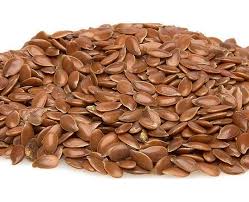
Among their many benefits flaxseeds are rich in vitamins, minerals, fiber, phytosterols, high quality protein and potassium. Besides that flaxseeds are literally the richest plant source for the essential fatty acids. One ounce (28 grams) of flaxseeds contains 6,388 mg of ALA omega-3 fatty acids, surpassing the daily recommended amount.
Flaxseeds come in a variety of formats. You’ll find whole flax seeds, milled flax seeds, and flaxseed oil. By mixing 1 tablespoon of flaxseed oil with food or by adding 2 tablespoons of ground flaxseeds to your morning yogurt, oatmeal, cereal, soup or salad you can get 57 percent of your daily value of ALA. Plus, many ‘natural’ snack foods include flax. So enjoy!
Soybeans & Tofu

Soybeans are a good source of fiber, protein, riboflavin, folate, vitamin K, magnesium, and potassium. However, soybeans are also very high in omega-6 fatty acids. In fact, a tablespoon of soybean oil, a cup of cooked soybeans, or a half-cup of tofu meets about 7 percent of your ALA needs for the day. Oh yeah, don’t dare forget about the edamame! Umm ummm good!
Mixed Greens
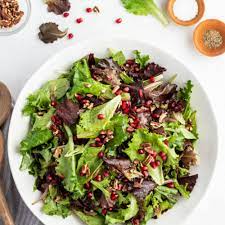
Salad has always been one of my favorite things and now I know why. Two cups of salad consisting of any of the dark green leafies such as kale, spinach, and other dark leafy greens gives you 100% of your daily value of omega-3’s. If you just want to do half via this delectable salad option, no problem. Just eat one cup and get 56 percent of your daily value.
Navy Beans
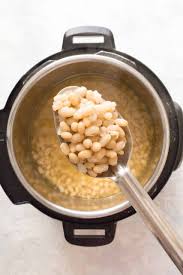
Besides being an excellent source of calcium, fiber and manganese, navy beans are a wonderful plant-based source of omega-3 fatty acids. Best of all, they’re versatile enough to be used in most recipes that call for dry white beans. They are particularly scrumptious in soups.
Pine Nuts
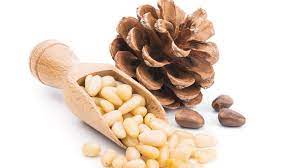
Pine nuts are another good source of ALA. Specifically, Mediterranean pine nuts offer the best benefits. Mediterranean pine nuts have a favorable omega-3 to omega-6 ratio, almost ten times higher than other pine nuts. Meanwhile, Mediterranean pine nuts are also exceptionally high in protein (34% by weight), monounsaturated fats, manganese and some B-complex vitamins. Aside from the nutritional benefits, pine nuts make a wonderful addition to savory dishes and salads.
Pumpkin Seeds
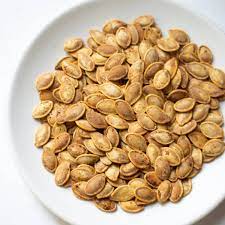
Pumpkin seeds as a snack will be all the more satisfying knowing that they are an excellent snack choice for increasing your intake of ALA. Roasted and salted as a snack or added to salads and cooked vegetables, pumpkin seeds rock any way you crunch it. Plus they’ve got calcium, magnesium, fiber, zinc, copper and protein.
Now despite how yummy these suckers are be sure to eat moderately. Pumpkin seeds are very high in omega 6 fat so they should be eaten balanced with foods high in omega 3 fat.
So what are your favorite fish-free sources of omega-3’s? How do you incorporate them into your daily meals?





